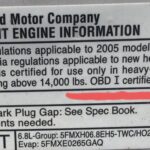Unlocking the hidden power within your GM vehicle is now easier than ever, thanks to advancements in OBD2 tuning. Dyno tuning with an OBD2 interface allows for precise adjustments to your engine’s parameters, resulting in noticeable gains in horsepower, torque, and even fuel efficiency. This article explores the world of dyno tuning GM vehicles using the OBD2 port.
Optimizing Performance with Dyno Tuning and OBD2
Modern GM vehicles rely heavily on the Engine Control Unit (ECU) to manage various engine functions. The ECU uses sensor data and pre-programmed maps to control ignition timing, fuel delivery, and other critical parameters. Dyno tuning leverages the OBD2 port, a standard diagnostic interface in all 1996 and newer vehicles, to access and modify these ECU settings. A dynamometer, or dyno, measures the force and power output of your engine, providing real-time feedback as adjustments are made. This allows tuners to fine-tune your engine for optimal performance under various conditions.
A standard OBD2 port in a GM vehicle.
How Dyno Tuning Works with OBD2
The process typically involves connecting a tuning device or laptop to your vehicle’s OBD2 port. Specialized software then allows tuners to read and modify the ECU’s data. By analyzing the data from the dyno, tuners can identify areas for improvement and adjust parameters like fuel injection timing, air-fuel ratios, and ignition advance. These adjustments can optimize power output, improve throttle response, and even enhance fuel economy.
A technician using a laptop and dyno to tune a GM engine.
Benefits of Dyno Tuning Your GM Vehicle
- Increased Horsepower and Torque: Dyno tuning can unlock significant power gains by optimizing engine parameters.
- Improved Fuel Efficiency: In some cases, tuning can lead to better fuel economy by fine-tuning the air-fuel mixture.
- Enhanced Throttle Response: Adjustments to ignition timing and other parameters can result in a more responsive engine.
- Customizable Performance: Tuning allows for tailoring engine performance to specific driving styles and needs. Whether you’re looking for fuel economy, increased towing capacity, or pure performance, dyno tuning can help.
Example of a dyno graph showcasing horsepower and torque increases after tuning.
Choosing the Right Dyno Tuner for Your GM
Selecting a reputable and experienced tuner is crucial for successful dyno tuning. Look for tuners who specialize in GM vehicles and have a proven track record. Ask about their experience with your specific make and model, and inquire about the tuning software and hardware they use.
Stages of Performance Tuning
Many tuners offer different stages of performance tuning, each with varying levels of performance gains. These stages often correspond to different modifications and fuel requirements.
| Performance Chip | Horsepower | Torque @6500RPM | Gas Saving |
|---|---|---|---|
| STAGE 1 (Fuel Saver Chip) | 20HP Increase | +16.2 ft·lbs | Up to 4MPG |
| STAGE 2 (All-Around Chip) | 30HP Increase | +24.2 ft·lbs | Up to 2MPG |
| STAGE 3 (Focused in Power) | 40HP Increase | +32.3 ft·lbs | N/A |
Conclusion
Dyno tuning your GM vehicle via the OBD2 port offers a powerful way to unlock its true potential. By working with a skilled tuner, you can achieve significant improvements in horsepower, torque, and fuel efficiency. Remember to choose a reputable tuner and discuss your performance goals to ensure the best results. Dyno tuning provides a safe and effective way to customize your GM vehicle’s performance to your exact specifications.

